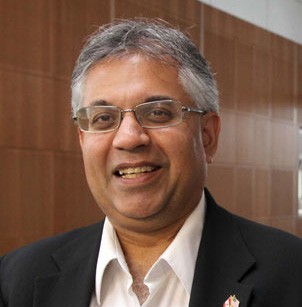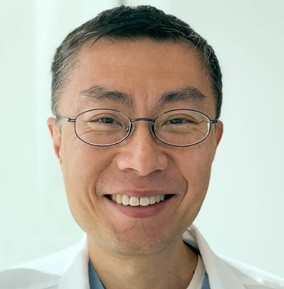EXCLUSIVE INTERVIEW
Deep down inside: How AI is supporting new therapeutic combinations
Pharmafile speaks to DeepDrug
Dr Kishor Wasan, Dr Supratik Mukhopadhyay, and Dr Bruce Weng are a part of the DeepDrug journey, which aims to develop new drugs for neglected and infectious diseases. In the first of these, Skymount Medical’s Chief Medical & Scientific Officer, Dr Wasan, explores how AI can help to bring drugs to the people who need it most
Pharmafile: How can AI help us adjust to new strains of the virus?
Dr Kishor Wasan: Artificial intelligence (AI) is like a child where you’re feeding it new information, and as it processes new information it develops an evolved algorithm based on that new information. As we get information about the variant strains, the AI algorithm can adjust to virus strains and spit out new compounds, or new molecular targets, to address it. But there’s a key point here: many people look at viral proteins to determine as potential targets, DeepDrug looks at human proteins. In other words, what are the proteins that the virus uses, so that it can enter, replicate, and transmit itself. And so many of the variant strains use the same human protein to do its business. That’s how we adjust to the new strains of the virus.
DeepDrug also examines the potential toxicity of proposed treatments – how far does this increase patient safety during clinical trials?
For greater than 50% of all drugs made to the market, the toxicity profile kills a product in drug development, because of nonspecific dose dependent toxicity. We can, early on, understand and identify which drugs are going to be too toxic for animal studies and ultimately human studies early on. AI not only predicts efficacy and drugs that might be very effective against the virus, but we can also predict what drugs at concentrations and doses that we want to see efficacy might actually be toxic to patients in vivo, and will lead to drug interactions. We have to confirm this work with wet lab pharmacology, we don’t jump straight from AI into patients. But what we do is eliminate early on what drugs are going to be toxic, what drugs we think will be toxic at the doses that we need to show efficacy.
The drug combination may reduce ‘long haul’ syndrome, the long-term consequences reported after COVID-19 recovery. How do you hope the drug will impact mental health issues following COVID-19 in some patients?
Long haul syndrome is becoming a bigger and bigger issue, and we’re still gathering data about it: we’re only 18 months into the pandemic, but we’re seeing that around 30% of patients might have some kind of longhaul syndrome, lingering effects, long after they’ve recovered from the virus. A lot of it has to do with the effects on their cardiovascular health, their mental health, as well as other things. We think if our drug combination can decrease the length and severity of the symptoms – once you get COVID-19, instead of having to suffer for 10 to 15 days and then afterwards have these lingering effects – if we can cut the symptoms of severity down to a few days, as opposed to a few weeks, it will have a long-term impact on organ damage and mental health. When you have long, lingering effects of a disease weeks or months after you’ve resolved the disease, I think that’s what taxes your mental health, because you’re still suffering. The direct effect on organ damage, and the indirect effect of the lingering effects on your mental health, is why we think this could help with mental health issues in the long run.
How can AI speed up the response to outbreaks of previously unknown diseases?
DeepDrug was working in emerging infectious diseases for a number of years, and we pivoted to COVID-19 eight months ago. But the whole idea and the premise is if we understand how viruses work, we actually know how many of these viruses utilise human proteins to replicate entry, transmit, etc. With that fundamental knowledge already in our back pocket, we’re going to be able to be ahead of the curve when a new emerging disease comes out. When a new disease emerges, we look at how the disease works, compare it to what we have in our algorithm, input into the AI any new features about that virus or disease that we don’t know about. From that already built algorithm, which is evolving and growing, we can then make predictions to deal with those emerging infectious diseases and viruses.
What developments in drug discovery do you anticipate in the next five years?
I’ve been involved in systemic fungal infections for 30 years. Many of us in the infectious disease community have said that the cupboard has been bare: we have not had a new set of drugs or drug compounds to treat a variety of infectious diseases for a very long time. In the field of systemic fungal infections, we’ve actually not had any new drugs, with new mechanisms of action, to deal with some of the new emerging systemic fungal infections, ones that have drug resistance, in the last 20 years. Looking into the future, if the pandemic has done anything else, it has really woken everybody else to the fact we need to fill that cupboard up with new drug therapies with new mechanisms of action. Moving forward, there will be a reemergence of research and development of new infectious disease drugs, using AI and other routes, so that we don’t get caught with what has happened in the last 20 years in infectious disease.

Dr Kishor Wasan is Chief Medical & Scientific Officer at Skymount Medical. He has published over 240 peer-reviewed articles and 280 abstracts in the area of lipid-based drug delivery and lipoproteindrug interactions. Dr Wasan has won many prestigious awards and is a fellow of the American Association of Pharmaceutical Scientists and the Canadian Academy of Health Sciences. He is currently an Adjunct Professor and Distinguished University Scholar in the Department of Urologic Sciences, Faculty of Medicine at the University of British Columbia, and is the co-founder of the Neglected Global Diseases Initiative at UBC. Dr Wasan led the research team at the Wasan lab at the University of British Columbia in the development of an oral formulation of amphotericin B, which has successfully completed Phase I human clinical trials. He heads the pharmacology programme at Skymount Medical.
Dr Supratik Mukhopadhyay is the lead researcher who developed the LSU DeepDrug AI platform. He is a computer scientist and professor at LSU
The DeepDrug team has been working on the AI for drug-resistant pathogens for eight years – what have the biggest milestones been over this time?
Dr Supratik Mukhopadhyay: I first had the idea of using AI to accelerate drug discovery around 2007. However, at that time, AI was not really as mature as it is today – the AI revolution had not started. Also, I didn’t have access to high-performance supercomputers. So I let the idea germinate. In 2009, I joined LSU and had access to LSU supercomputers (that was one of the reasons why I joined LSU). By 2012, the AI revolution had started. I also found a fantastic collaborator in Professor Michal Brylinski who had just arrived at LSU. At this point I decided to act, starting the DeepDrug project.
In fact, it’s emerging out of what we’re trying to do with the neglected global disease world, and what we’re trying to do with more efficient drug development through AI.
What are your hopes for AI and neglected diseases?
I’m the co-founder and co-director of the neglected global diseases initiative at the University of British Columbia, which we formed 10 years ago. For us, the idea was to develop drugs at a low cost for developing world indications. The definition of neglected diseases is that they have a huge number of patients or people that are infected with the disease, but there’s very few resources to treat the disease. What I hope will happen is that with AI, we can develop new drug molecules more effectively, more efficiently, that are cost effective, that we can then go after many of these neglected global diseases that we really haven’t spent the time on. Unfortunately, many companies are trying to make a profit, and for neglected diseases, you’re working in countries that don’t have the economics that pay for those high dollars. I think that’s where AI comes in. Because we can develop cost effective drugs that can get to millions of people for these neglected diseases.
There have been several accomplishments along the way. We broke up four adenosine receptor antagonists into their molecular fragments and then recombined them to create an adenosine receptor molecule. Adenosine receptor paired with various G proteins have effect on inflammation, pain, and immune responses. By 2016, we entered the IBM Watson Artificial Intelligence XPRIZE and by 2020, we had reached the semi-final of the Artificial Intelligence XPRIZE (among 142 teams worldwide). In February 2020, I gave the semi-final presentation at the TED World Headquarters at New York City. After we came back, we saw the first COVID-19 wave hit the US. Soon, there was a lockdown in Baton Rouge. At this point, we decided to pivot our engine towards therapeutics discovery for COVID-19. Today, a combination therapy is undergoing human trials both at the Riverside University Health System Medical Center in California and in Europe.
What is the potential of AI in drug discovery and research? What will it change?
I will give an analogy here. If you see the time period between 200 BC and 1500 AD, science and technology progressed at a very slow pace. For example, all through this period our mode of transportation was horsedrawn carriages/horses and sail-driven ships.
However, in the last 300 years, suddenly you see rapid progress in science and technology. We went from horse-drawn carriages/ horses and sail-driven ships to high speed locomotives, cars, aeroplanes, and rockets. What changed?
Let us look at physics. Before the 17th century, physics was mostly descriptive (it was called Natural Philosophy). All that changed when Sir Isaac Newton invented calculus that brought in the quantitative aspect in physics. Now you could compute and predict.
I believe that biology and pharmaceutical sciences, have been, for a long time, like physics before 17th century, largely descriptive. What AI brings is the quantitative aspect. You can now compute and predict. This can change the nature of drug discovery.
Today the time and cost needed to take a new drug to the market from scratch is 10 years and $2.5 billion. A lot of this time and cost required is due to the fact that only 12% of the drugs developed by pharmaceutical companies succeed. As a result, pharmaceutical companies were reluctant to develop new drugs for sectors that had low profit margin, e.g., infectious diseases. In fact, the last new antibiotic was developed by the pharmaceutical industry in 1987. AI can not only accelerate the identification of hits but also improve the success rate drastically. You will now be able to take new drugs to the market at a fraction of the time and cost.
In what ways will AI impact future drug discovery?
I think AI will be tightly integrated into the drug discovery pipeline. There will be renewed focus on drug discovery for infectious diseases and other neglected global diseases. AI-enabled drug discovery pipelines should be able to handle pandemics in a much better way. In addition, given the ubiquity of genomics datasets as well as EHR data, I anticipate the rise of personalised therapeutics.
We will see pandemics, this pandemic and even the next ones, getting rapidly addressed. We’ll see new types of medicines and vaccines, for things like Dengue, cancer, and lung damage, for which we have hardly any medicine to treat. Treatment for these kinds of diseases, neglected diseases, will see a rapid advancement. Moreover, we will see a rapid advancement in our understanding of biology.

How can AI help us improve global health and access to therapeutics?
AI can help repurpose generic drugs and their combinations towards emerging diseases, providing affordable therapeutics for the world as opposed to expensive treatments like monoclonal antibodies. AI can help develop environmentally friendly drug manufacturing processes. In addition, AI can help discover lipid nanoparticles with certain properties that make them suitable for drug delivery. AI can find therapeutics based on generic drugs: there are thousands of generic drugs on the market today, and it can see if any of these generic drugs can help us treat diseases, or in combination can. And that immediately changes the potential cost of pharmaceuticals, because generic drugs are cheap.
Another thing is nutraceuticals: there are plant extracts, natural products, plant extracts and other minerals, that may be suitable for prophylactic, immune, purposes for different diseases. COVID-19 may be one of them, and maybe other diseases, like flu, and so on. Advantages here are an environmentally friendly manufacturing process, and price – these plants can be grown in mass in different parts of the world.
AI can revolutionise global health, and it can revolutionise disease diagnosis. Combining the two potentially gives patients access to personal therapeutics.
DeepDrug can reduce the time and cost of drug discovery by as much as 90%. How will this huge reduction in resource allocation change things, and how will it allow the focus of drug development to shift?
There are two modes of operation, one is creating new molecules completely from scratch, the other is repurposing existing FDA approved drugs. For new drug development, DeepDrug can save 30% of the time. However, through drug repurposing, DeepDrug can save 90% of the time. Because DeepDrug can already filter out candidates that are likely to fail, you will need less in vitro testing, and less in vivo testing. It helps rapidly take a drug to human trials. Because of the drastic reduction in time and cost, pharmaceutical companies can now attend to neglected global diseases that have so far received very little attention.

Professor Supratik Mukhopadhyay is a faculty member at Louisiana State University. He led the DeepDrug team on artificial intelligence for automated drug discovery to the semifinal of the IBM Watson Artificial Intelligence XPrize. His team was one of only 142 teams to compete worldwide. The DeepDrug Artificial Intelligence Platform’s combination therapy for COVID-19 is in the process of undergoing human studies in Ukraine and at the Riverside University Health System Medical Center, California. It took 13 months from inception to human studies, which is one of the fastest in the pharmaceutical world for a combination therapy. The DeepDrug technology developed by Dr Mukhopadhyay has been licenced by Skymount Medical. Dr Mukhopadhyay has been awarded three US patents and has another eight patents pending. He cofounded Ailectric LLC, an AI startup focusing on sound, text, and image analytics.
Dr Bruce Weng is an infectious disease specialist and physician at Riverside University Health System Medical Center, partnering with Skymount Medical to facilitate human clinical trials demonstrating the safety of SM-19
Now that this drug combination is in clinical trials, what do you think its potential will be?
Dr Bruce Weng: This is intervention postinfection, so it doesn’t replace preventative therapy, which I think is the most crucial intervention. I think a lot of people may look at interventions that are now available and say ‘Oh, I don’t need vaccination,’ and I do want to emphasise that one of the most, if not the most effective therapy, is getting vaccinated.
But we know that nothing’s perfect, and there will be breakthroughs, or maybe some people make a personal choice that they don’t want to be vaccinated, and they can potentially get COVID-19. What we’re trying to look at is a combination therapy to see the safety and efficacy in potentially reducing the side effects and complications of COVID-19 infection. Right now, it’s a small trial, so safety and efficacy are the most important. We’ve seen in the pipelines that potential oral therapies are coming out, you’ve probably all seen it in the news. Availability of more options would be great, especially if they’re generic options, not just in the US or the UK but anywhere in the world.
How does this compare to other COVID treatments that are available?
Outside of the highly effective vaccines that we know are already available, the current treatments are primarily IV therapy, at least here in the US. There’s been a big push to use that, especially for people who are high risk and are not hospitalised, but we know that IV therapy can be really difficult to set up. Having a therapy where you could just go to the pharmacy, or have somebody else go to the pharmacy and pick up for you, really would improve accessibility. The key is having something that’s easy to give and easily accessible, potentially at a lower cost, too.
What changes do you think have proven most significant to our approaches in medicine, in recent years?
Technology is a big part of everything we do now. Computer technology is in almost everything. Having this rapid technology, being able to create these new interventions and bring them to the public – through potential interventions and then therapeutics – is huge.
But, technology is a double-edged sword. If I’m looking at something online, and I’m not a mechanic, I don’t know about a lot of other stuff which isn’t in my field, and I can’t separate what’s real and what’s not, it can get very confusing, because you can read something which looks like it’s coming from a reliable source. And how do you differentiate if that’s factual information versus false information? Just looking at the vaccination issues, it’s very easy to get things confused.
How might AI help us in future pandemics?
I think that as people use AI, and as AI technology improves over time, it can potentially even identify pandemics before they start. So maybe you can see a certain pattern or scenario in the world and identify something that’s going to happen, target it and hopefully cut off the next COVID-19 outbreak, or at least be able to contain it a lot more rapidly. That might be a wonderful use for AI just with regards to tackling future pandemics; obviously the evolution of AI is going to continue, it could help with other new innovations and therapeutics, especially with other outbreaks. This is something that’s been talked about over here, at least theoretically, but it doesn’t even have to be restricted to infectious disease: the thought of using AI for therapeutics and intervention, all sorts of medicine, is tremendous. Just extrapolating the use of AI into other spheres of humankind, for example education: it’s really just waiting for people to come up with an innovative way to use it. But I think with regards to pandemic, potentially just identifying them much earlier, that might be one way that we really utilise the technology. Within medicine, the biggest area it may be used is for new therapeutics down the road. If you’re looking at the world of endocrinology, cardiology, or cancer research, for example, the ability to identify existing and approved medications, repurpose them is vital. AI may be able to understand certain patterns and know whether these medications might actually be applicable and useful in a different area or need. That’s really where AI could help in the field of medicine.
Several organisations have studied which therapeutics might prove successful against COVID-19. What brought about this undertaking between RUHS and other organisations?
When RUHS first heard about this potential study from our partner group, Skymount Medical, the idea of a potential oral therapy that might be much more easily accessible to the public was very appealing. Our hospital and healthcare system serves a really underrepresented and underserved area. The thought of having something that’s easily accessible to them was a huge plus, and the somewhat novel idea of using AI-based technology to be able to identify and repurpose medications was really interesting too. The thought was, if it could be used for something like infection, it could be used in other fields of medicine. That novel approach was very appealing, and that’s what got RUHS jumping on board. Obviously first and foremost is what we’re doing with this particular study, making sure it’s safe, more than anything. But the initial appeal was number one, this novel approach, and number two, being able to find a potentially accessible and affordable therapeutic for the general population, not only here but across the US and the rest of the world.

Bruce Weng is an infectious disease physician, practicing at Riverside University Health System Medical Center (RUHS) in Moreno Valley, California, which serves as the primary safety-net hospital for Riverside County residents. He is serving as an assistant clinical professor at the University of California, Riverside and Loma Linda University Medical Center. His primary focus of practice involves serving as co-chair of the antimicrobial stewardship programme, in addition to general infectious disease practice. Dr Weng and his team are assisting in the clinical study investigating the safety and efficacy of a DeepDrug formulation at RUHS.